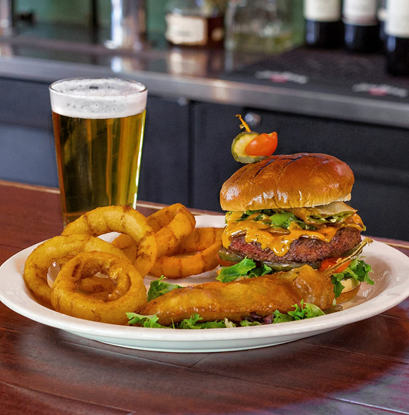Follow our easy, step-by-step, recipe to learn how to cook a steak in your cast iron skillet.
You can cook a great juicy steak without an outdoor grill. Just break out your cast iron skillet instead.
I love a good steak cooked over charcoal, don’t get me wrong about that. But, sometimes it’s just not possible to cook that way.
When I was a teen, my older brother would invite our mom and me over to his house for supper. He owned his own grocery store, and would often cook up Ribeye steaks on his kettle grill for us. His wife would make an awesome salad that included radishes and minced onions, plus she would bake up a big potato with lots of butter. That was some really fine eating to me.
Now days, I don’t get the chance to enjoy a steak over coals as often as I use to. So, sometimes, I’ll just pull out the cast iron skillet and cook one on the stove top. They’re still flavorful and juicy and quicker than waiting on charcoal to get burning good. Smile.
I’m using a T-bone, but you could use Ribeye, New York Strip, whatever you prefer. Just watch it closely so it doesn’t overcook more than the way you like it. I’ll take mine Medium-Rare please. Smile.
Bacon grease goes into the hot skillet for some added flavor, then once the steak is cooking, I add butter and spoon that over the steak until it reaches Medium-Rare for me. Just add a baked potato and some thick slices of Garlic Texas Toast and you’ll be good to go.
Ready to give our steak a try? Alright then, let’s head on out to the kitchen, and… Let’s Get Cooking!
Cast Iron Skillet Steak recipe. You’ll need these ingredients.
I’m cooking a T-bone today, but you can do the same with other steaks just as easily.
Place your steak on a plate or platter, then sprinkle it well with salt.
Then add some black pepper.
Garlic powder is optional, but I always add it to mine.
Now, use your fingers and rub the spices into the steak. Press firmly so it holds on tight.
Flip the steak over and repeat the same process on the other side.
Let the steak rest: I like to leave the steak out for about 30-45 minutes so it can come up to room temperature before we toss it into the skillet. This will help it cook more evenly.
Place the skillet over Medium heat on your stove. This seems to be hot enough for me, but yours might need a bit more heat to get the skillet good and hot. Part of cooking is being able to watch your food and adjust heat up or down as needed to get the best results.
Let the pan get hot.
When the pan is hot, add the bacon grease. That’s right… bacon grease. Smile.
As soon as the bacon grease has melted, swirl the pan to coat the bottom with grease. Then, carefully place the steak into the skillet.
After the steak has cooked for 3-4 minutes, flip it over.
Once the steak has cooked enough, it will easily release from the pan without sticking. If it tries to stick, just let it cook a bit longer. You can always lift the steak up to see how it’s cooking. Don’t be afraid to check on it.
Cast iron skillets will have a hot spot, usually in the center, so some deeper coloring will occur in that area. Just don’t let it burn.
I also use tongs to hold the steak up on it’s fat edge to help that cook faster. It only takes a minute or two to do this.
Once you’ve flipped the steak, add some butter right on top of the steak. Let the butter melt while the steak is cooking on the second side.
Once the butter has melted, you can begin spooning the melted butter onto the steak. Butter burns easily, so adjust the temperature as needed.
At this point, you will want to cook the steak to the way you like it. There are several ways to test the steak to see if it’s Rare, Medium, or Well Done. Doing it by feel takes some time to learn, so a digital thermometer is one way to give you a quick and accurate reading of the temp inside the steak.
Rare = 130° to 140°F
Medium Rare = 145°F
Medium = 160°F
Well Done = 170°F
Burnt = Not acceptable. Smile.
Once you remove the steak from the skillet, let it rest again for about 10 minutes before serving. This way it can redistribute the juices throughout the meat. It does take a little patience, but you know the old saying, “Good things come to those that wait.”
Enjoy!





